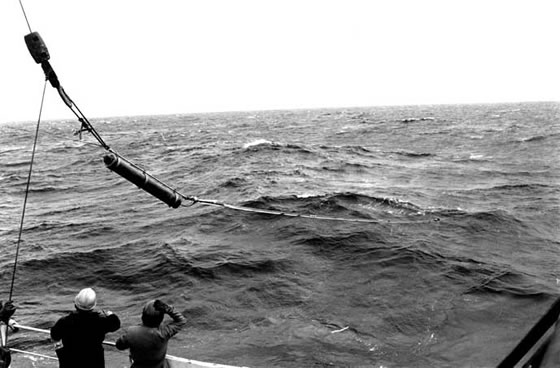Autonomous Listening Stations (ALS)
The geographical constraints imposed by the use of shore-based listening stations were later relaxed by the development of moored Autonomous Listening Stations (ALS; Bradley, 1978). These consisted of subsurface moorings fitted with hydrophones, which extended coverage to the Gulf Stream and eastern Atlantic. In the mid-1980s float design was altered again to allow floats to go deeper. Pressure cases were made from glass spheres instead of aluminium tubing, which allowed floats to be tracked as deep as 3000 m at ranges of 1000 km (Gould, 1982). The transmission and tracking life of floats had become more of the order of years rather than weeks or months.

An autonomous listening station being deployed from RRS Discovery in the mid 1980's. The ALS consists of a 10m hydrophone unit (furthest from the ship) and recording unit (cylinder above the hydrophone). The ALS was deployed at a depth of approximately 1000m on a mooring.